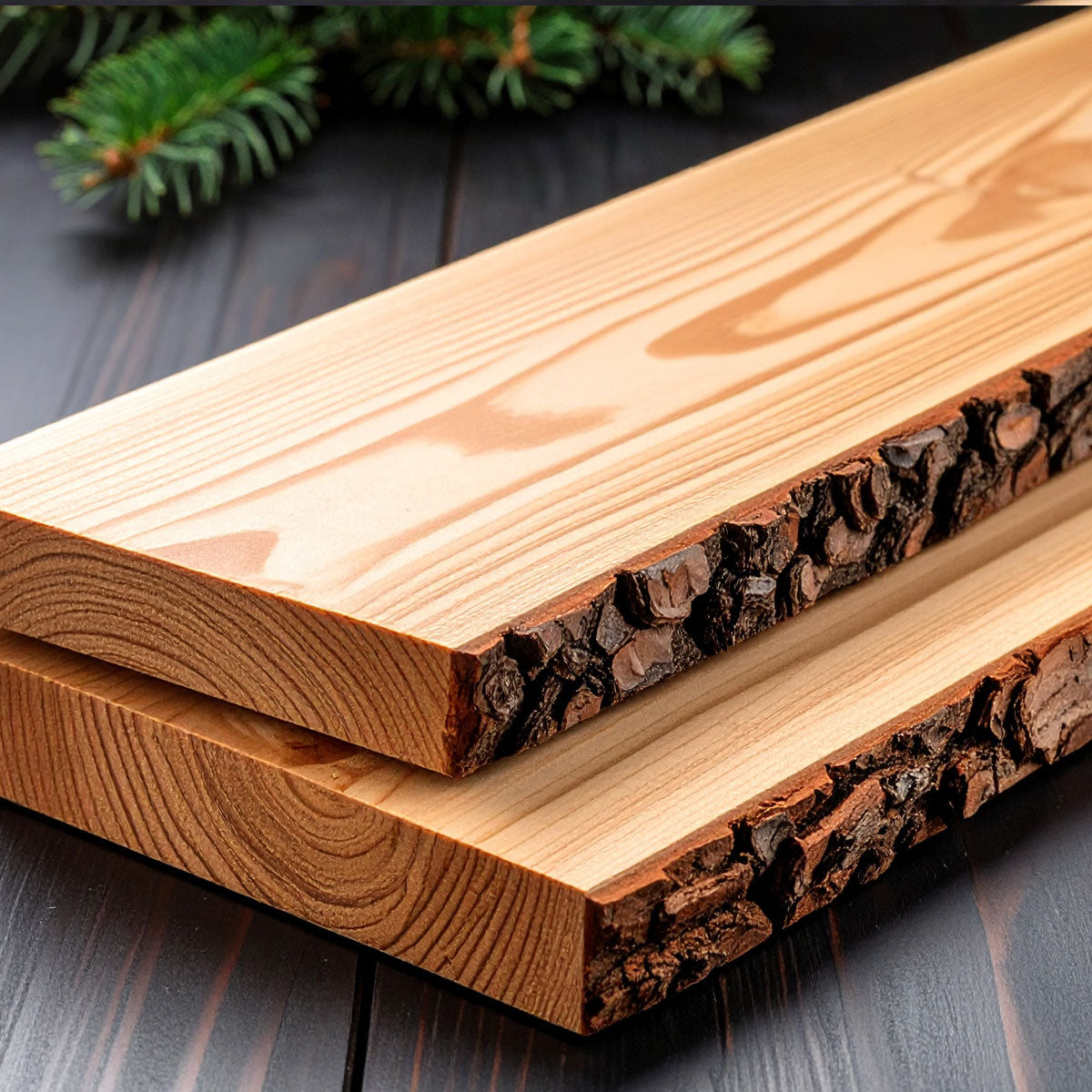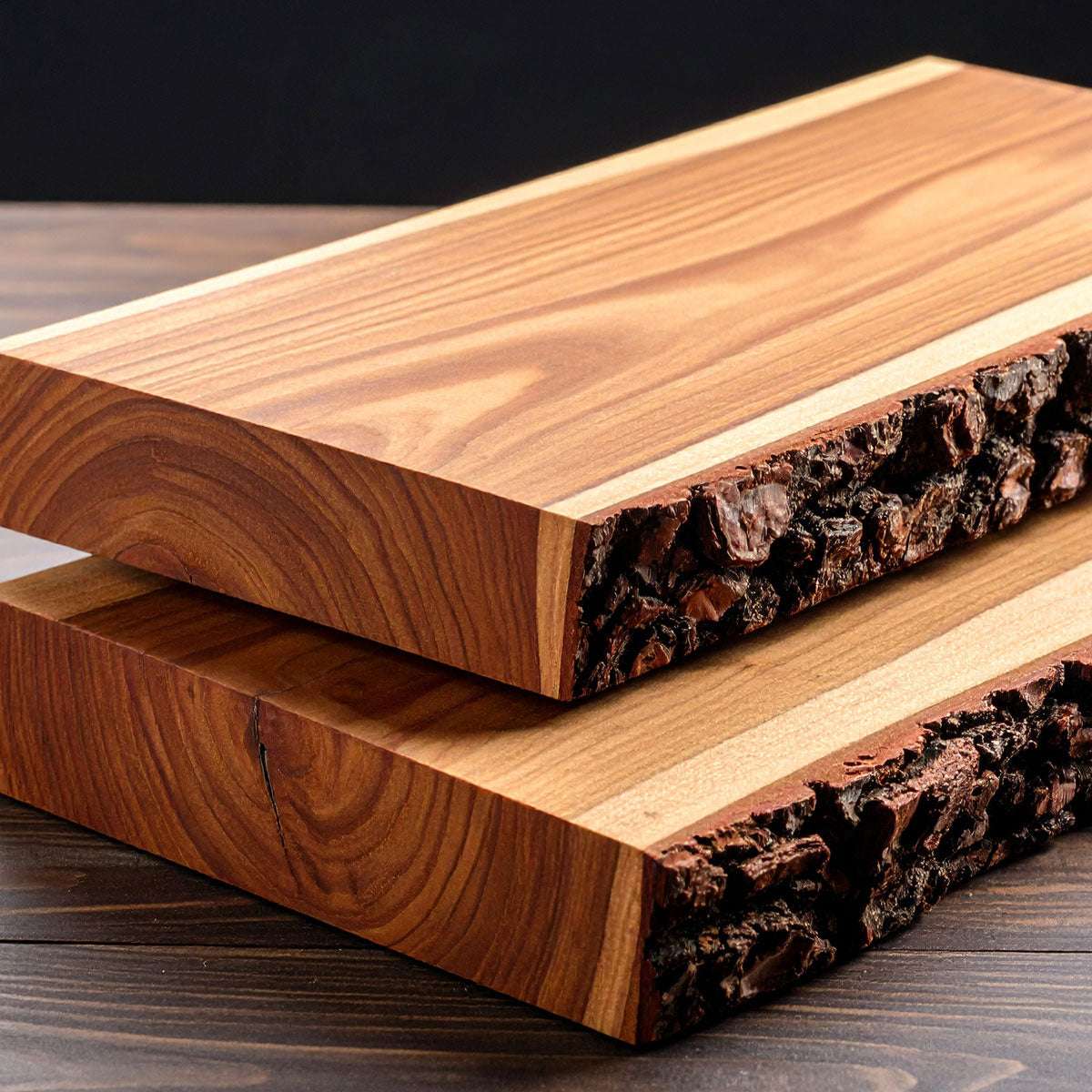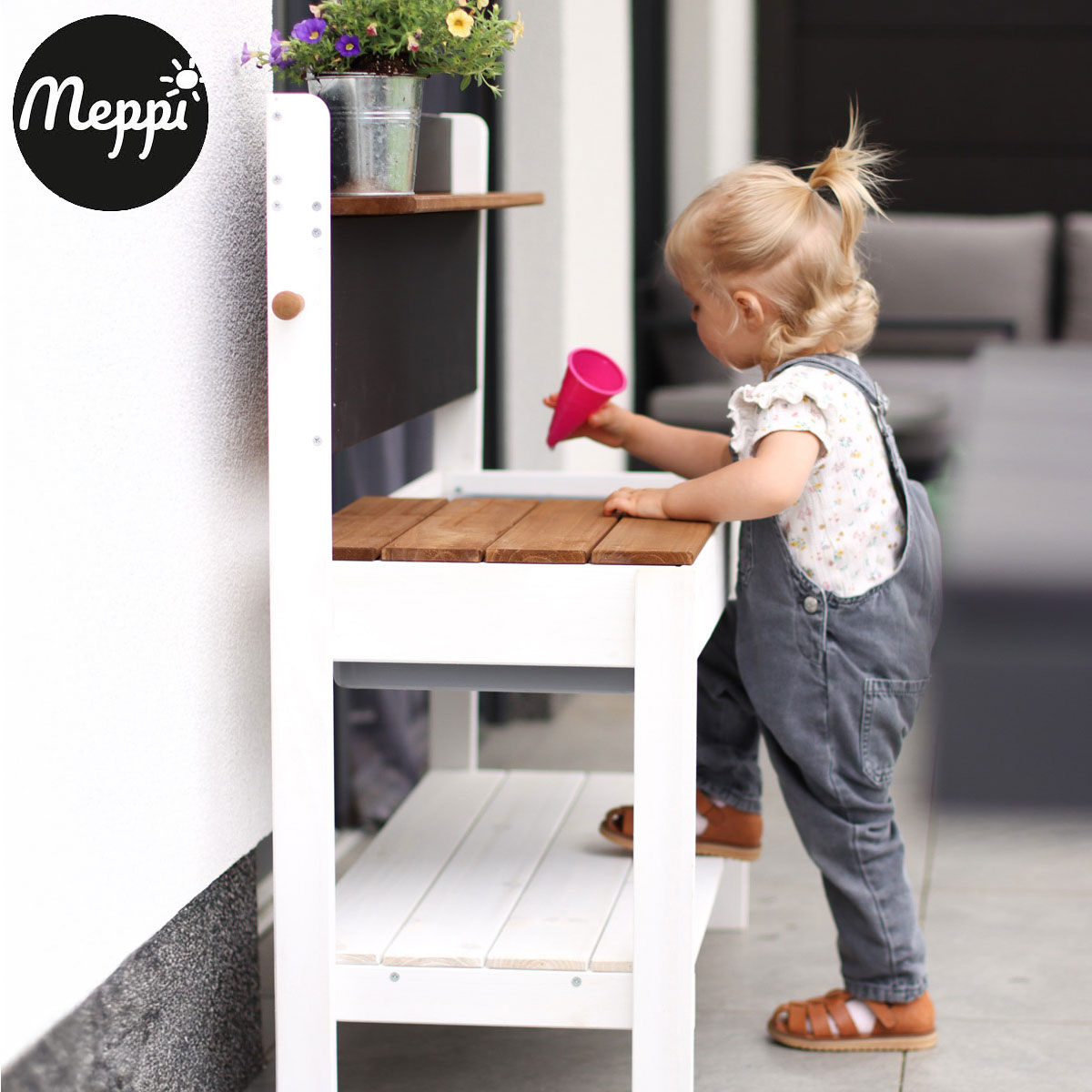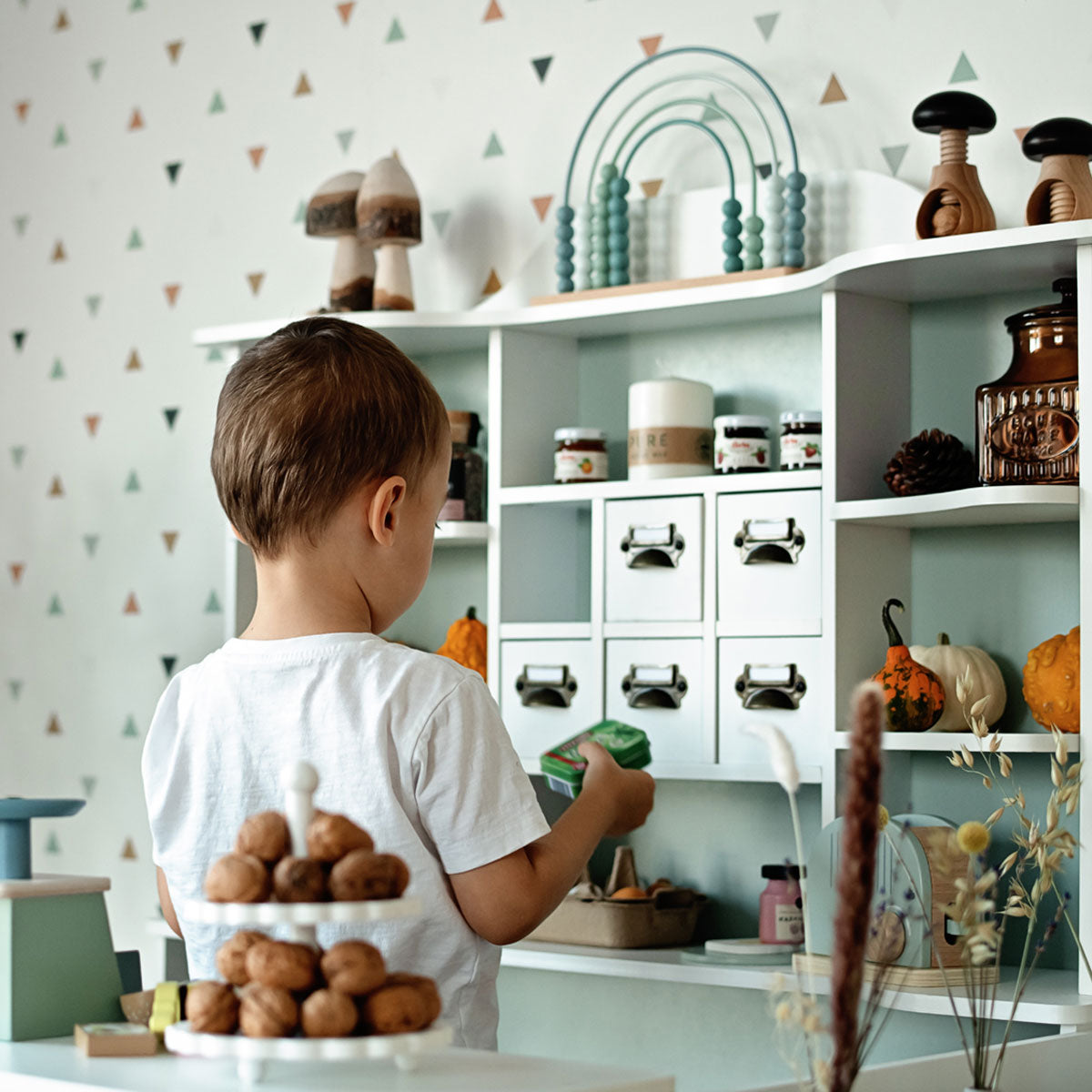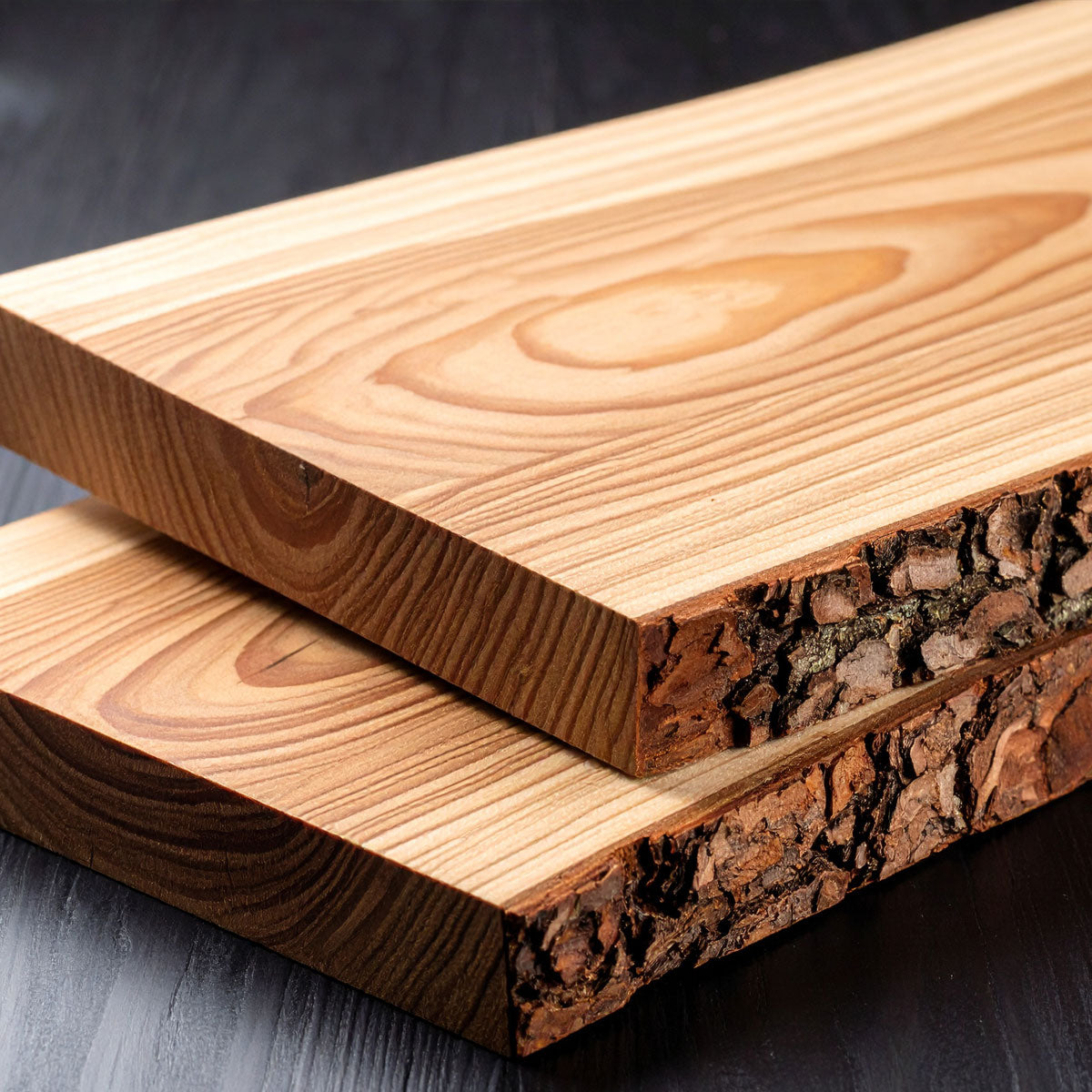
Elm
Elm Wood – Properties, Uses & Special Features
Elm wood, also known as Rüster, comes from trees of the Ulmus genus. It is one of the most visually striking native hardwoods and is valued for its bold grain, toughness, and decorative appeal – especially in furniture making, crafts, and occasionally in toys.
Origin & Species
-
Genus: Ulmus
-
Main species: Field elm, wych elm, fluttering elm
-
Distribution: Europe, North America, Asia
-
Sustainability: Regionally limited availability – Dutch elm disease has reduced populations
Appearance & Structure
-
Color: Sapwood light, heartwood light to dark brown, sometimes reddish
-
Grain: Ring-porous, lively, with prominent pore rings
-
Surface: Smooth, decorative, sometimes with shimmering or figured patterns
-
Special feature: Noble wood character, often used as veneer
Technical Properties
| Feature | Description |
|---|---|
| Hardness | Medium to high (Brinell hardness approx. 27–37 N/mm²) |
| Density | Approx. 640 kg/m³ – medium weight |
| Workability | Good for sawing, planing, and sanding; sometimes fuzzy |
| Elasticity | High – excellent bendability when steamed |
| Durability | Class 4 – moderately resistant; very durable underwater |
| Drying | Slow and careful – prone to cracking and warping |
Applications
-
Furniture: Tables, cabinets, veneers, solid wood pieces
-
Toys: Figures, tone bars, turned parts (in small-scale production)
-
Interior design: Parquet flooring, wall cladding, stairs
-
Musical instruments: Guitars, violins, piano components
-
Crafts: Bowls, vases, decorative objects
-
Hydraulic engineering: Pile dwellings, sluice gates (very durable underwater)
Advantages
-
Tough and elastic – ideal for bentwood components
-
Distinctive, decorative grain
-
Easy to stain, oil, and lacquer
-
Regional sourcing possible
-
Suitable for creative and educational applications
Disadvantages
-
Low weather resistance
-
Prone to cracking during rapid drying
-
Fuzzy surfaces with strong grain deviation
-
Limited availability due to elm disease
Conclusion
Elm wood is a character-rich, versatile material with high toughness and decorative appeal. In toy making, it is mainly used in artisanal small batches – ideal for creative, durable, and educationally valuable products with a unique wood texture.

